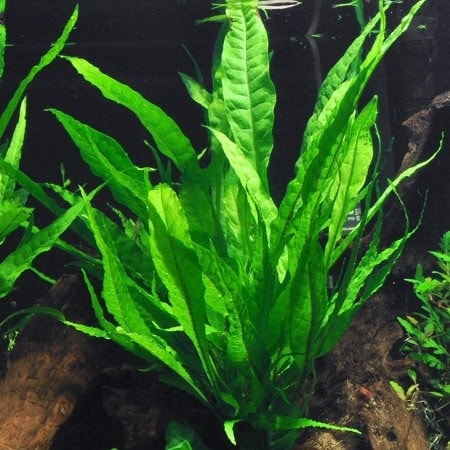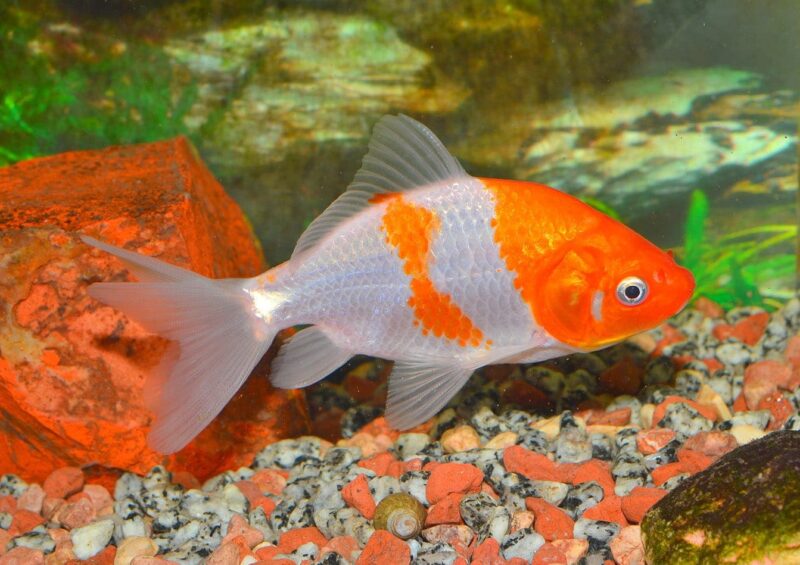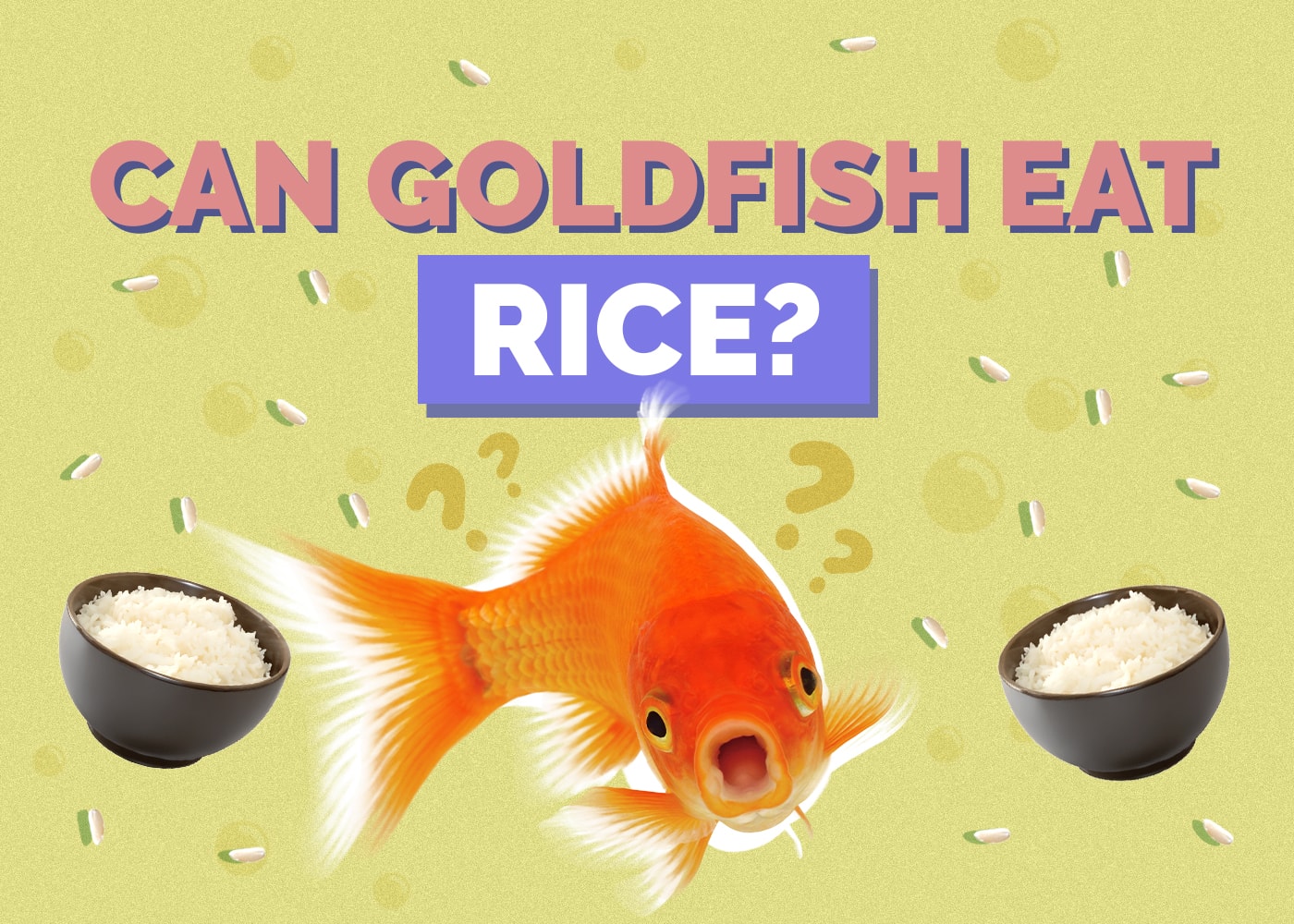12 Easy Plants for Goldfish Tanks in 2024 – Reviews & Top Picks

Updated on

Having real plants in your aquarium is more important than just the aesthetics. Plants offer shelter and security, help purify the water, and provide a more interactive environment for your goldfish than fake plastic plants.
But which plants are the best for goldfish tanks? And more importantly, which plants are the easiest to grow? After all, we’re not aqua farming! Most aquariums will prosper with a range of different plants that are easy to care for and provide benefits to your goldfish.
I’ve made a list of 12 plants that have worked for me (and other goldfish keepers). Let’s get started!
A Quick Comparison of Our 2024 Favorites
| Rating | Image | Product | Details | |
|---|---|---|---|---|
| Best Overall |

|
Java Fern |
|
Check Price |
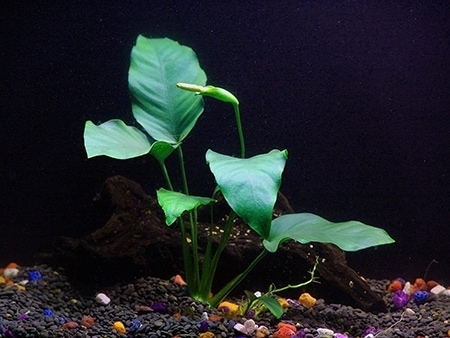
|
Anubias |
|
Check Price | |

|
Hornwort |
|
Check Price | |

|
Cabomba |
|
Check Price | |

|
Brazilian Pennywort |
|
Check Price |
The 12 Easy Plants for Your Goldfish Tank Are:
1. Java Fern – Best Overall
| Care Level: | Easy |
| Light: | Low to moderate |
| Substrate: | Any or none |
- Easy care level
- Grows in low-light environments
- Tough leaves
- Provides shelter to fish
- Hardy
- Doesn’t require substrate
- Unlikely to be eaten by goldfish
- May grow too large for nano and small tanks
Java fern makes a lovely background or mid-ground plant and resists the attacks of goldfish due to its tough, fibrous leaves. Its dense, leafy structure affords shelter and is fun for your fish to swim through. You pretty much have to be trying to kill this plant for it to die. Java fern is not demanding in light or fertilizer requirements and does not require a substrate to be planted in; it can be easily affixed to wood or rocks.
With time and the right conditions, Java Fern can grow to a large size (up to 14 inches) and makes an impressive addition to any aquascape. In my tests, no variety or size of goldfish bothers it. It makes a nice background plant in shallower tanks or mid-ground in larger ones.
How to Plant:
Java fern does not want to be buried in any substrate, preferring to have its roots and rhizome left on top. Smaller plants can be affixed with plant glue, but I have found lead weights are the easiest and most effective method for anything but baby Java ferns. Simply wrap them around the rhizome and drop them where you wish.
- Great option to use as a background or “filler” in the aquascape
- Lives without being planted in a substrate; does well in low light without added fertilizers
- A good first choice for beginners; hard to kill
2. Anubias
| Care Level: | Easy |
| Light: | Low to moderate |
| Substrate: | Any or none |
- Easy care level
- Grows in low-light environments
- Thick, rubbery leaves
- Available in many varieties
- Hardy
- Doesn’t require substrate
- Unlikely to be eaten by goldfish
- New leaves may be susceptible to being eaten
Anubias is our runner-up for easiest plants to grow in an aquarium. With thick, rubbery leaves that can resist even the most voracious of goldfish, it comes in many varieties and requires very little special attention to keep it happy. Rarely do larger slim-bodied varieties attempt to eat them, though they may nibble on the new leaves. When well-cared for, they can grow to a large size an produce little flowers!
Anubias petite can be placed side by side to create a “carpet effect” at the bottom of the tank. Anubias does not require any substrate and prefers to have its roots left uncovered (especially great for those who have a bare-bottom tank).
How to Plant:
Anubias can easily be attached by using plant glue to affix the thick stem at the bottom to a rock or driftwood. I have also found lead weights are excellent for weighing down these plants and can be cut for smaller plants or doubled up for larger ones. These allow you to place the plant anywhere.
- Least likely to get eaten by goldfish
- Low maintenance; low-light, no added fertilizers or substrate required
- Hardy and difficult to kill, perfect for beginners
- Related Post: Water Wisteria: Complete Care Guide (Planting & Growing)
3. Hornwort
| Care Level: | Easy |
| Light: | Low to moderate |
| Substrate: | Any or none |
- Easy care level
- Grows quickly
- Unlikely to be eaten by goldfish
- Broad temperature range
- Consumes high levels of nitrates
- Can grow very tall
- Needle-like leaves may shed in the tank
If you are like me and don’t have a green thumb but still want a beautiful, enhancing plant for your aquarium, Hornwort is the one for you. It’s also known as Coon’s Tail because of its busy shape.
This is a very flexible plant with low demands. It does not need a fancy substrate, fertilizers, CO2, or highlight. In fact, it can grow in just about any condition. With more light, it looks bushier and grows faster—up to several inches a week! Goldfish don’t bother it at all in my experience due to the tough needles instead of tender leaves.
Hornwort is tolerant of a huge range of temperatures and is probably one of the only plants that can survive winter outdoors in a pond. Because it is a nitrate hog, it helps out-compete algae problems. Great as a background plant as it can grow practically as tall as you have space for.
How to Plant:
You can weight it down with lead weights or leave it floating; it has no root system. Some find sticking it in the substrate works well.
- Fast-growing & nutrient absorbing
- Algae-inhibiting
- Great for spawning fish, eggs & fry
Read More: Hornwort Aquarium Plant Guide
4. Cabomba

| Care Level: | Easy |
| Light: | Low to moderate |
| Substrate: | Sand or gravel |
- Easy care level
- Grows in low-light environments
- Unlikely to be eaten by goldfish
- Great for water purification
- Lush appearance
- Great for protecting eggs and fry
- Feathery leaves may shed in the tank
Cabomba is a little-known but fantastic plant for goldfish, resistant to even larger pond goldfish. Also known as Fanwort, it is a phenomenal water purifier. It is a stem plant that likes to grow roots. A soft plant with a lush look, it makes a stunning background planted in rows or used as a filler in the aquascape. The dense, feathery leaves are perfect for spawning tanks and offering fry or fish shelter. It is very similar to Myrio Green, another fantastic plant for goldfish.
How to Plant:
If you have a bare-bottom tank or want to provide the most nutrients, this plant will do great in a glass cup filled with 3/4 soil and topped with 1/4 gravel or sand. It will grow very healthy in this setup. Some also plant it directly in the sand or gravel substrate. It likes to grow roots into a substrate of some kind and does best with fertilization in the form of soil or root tabs. It can be left floating but looks best planted.
- One of the most beautiful aquarium plants available
- Fast growing, purifies water well
- Fluffy appearance offers fish & fry shelter
Read More: Cabomba Aquarium Plant Guide
If you're new to the world of goldfish or are an experienced goldfish keeper that loves to learn more, we recommend you check out our best-selling book, The Truth About Goldfish, on Amazon. From diagnosing illnesses and providing correct treatments to ensuring your goldies are happy with their setup and your maintenance, this book brings our blog to life in color and will help you to be the best goldfishkeeper you can be.
5. Brazilian Pennywort

| Care Level: | Easy |
| Light: | Low to high |
| Substrate: | Any or none |
- Easy care level
- Grows in low-light environments
- Rubbery leaves are unappealing to goldfish
- May grow above the water’s surface
- Reduces algae growth
- Produces flowers
- May require nutrient supplementation
Pennywort is an excellent choice for goldfish tanks. The leaves are a bit rubbery, making them unappealing to them. It will grow underwater and, if allowed to, will grow over the surface of the water. This allows it to help shade other plants and prevent algae. It also is more effective at nutrient export. Pennywort can produce beautiful little white flowers. It is an easy to care for plant and can be left floating or planted in the substrate.
How to Plant:
Leave it floating if you like, or plant it in the substrate. It will benefit from fertilization or soil. You can use glass cups to hold soil capped with gravel or tie cloth bags of dirt around the base of this plant.
- Floating or rooted; submersible or aerial
- Very easy, non-demanding plant
- Helps shade other plants to protect from algae
6. Moneywort
| Care Level: | Relatively easy |
| Light: | Moderate to high |
| Substrate: | Sand or gravel |
- Moderately easy care level
- Unlikely to be eaten by fancy goldfish
- Can be grown emersed
- Grows well in ponds
- Produces flowers
- Easy to prune
- Moderate to high light requirements
- May be eaten by slim-bodied goldfish
Also known as Bacopa Monnieri, Moneywort is a stem plant that is popular in aqua-scaping for the beautiful, small round leaves it produces that add detail to the aquarium. Most fancy goldfish will not bother this plant, though the leaves may be nibbled on by larger slim-bodied fish. Some report it does very well in their ponds. It can grow emersed and produce beautiful flowers. It does not require CO2 or high light but will benefit from both, making it a good choice for low-tech setups. Easy to prune, it is a great choice for beginners.
How to Plant:
This plant does best in soil or with fertilizer in an inert substrate. It will develop a root system and will do well in glass cups of soil capped with gravel or sand.
- A good choice for fancy goldfish tanks
- Adds nice detail to the aquascape
- Bright green color
7. Ludwigia
| Care Level: | Relatively easy |
| Light: | Moderate to high |
| Substrate: | Sand or gravel |
- Moderately easy care level
- Beautiful, variegated colors
- Great for protecting eggs and fry
- Easy to propagate
- Leaves are sturdy enough to withstand goldfish attacks
- Moderate to high light requirements
- Needs high light and nutrition to produce red coloration
Ludwigia is hugely popular among aquarists for its beautiful variegated coloration. A relatively fast-growing plant, it provides ample shelter for fish and fry while improving the ecosystem of your aquarium through its strong oxygen production. Propagation is simple by trimming and replanting the trimmings. It will add an elegant touch to any fish tank, and its leaves are durable enough to resist the attacks of most goldfish—fancy and slim-bodied alike. The red pigmentation is promoted by higher lighting, low nitrates, and high phosphates.
How to Plant:
A heavy root-feeder, this plant prefers to have accessible nutrients in the form of either soil or fertilizer supplementation. Pots of soil capped in gravel or sand are a great way to provide the benefits of soil to this plant without making a mess in your tank.
- One of the highest oxygen-producing plants
- Beautiful red to pink tones add vibrant color contrast
- Hardy & low-maintenance plant
Read More: Ludwigia Repens: Complete Care Guide (Planting & Growing)
8. Vallisneria

| Care Level: | Relatively easy |
| Light: | Moderate to high |
| Substrate: | Sand, gravel, or containers |
- Moderately easy care level
- Grows quickly
- Hardy
- Unlikely to be eaten by goldfish
- Propagates easily
- Moderate to high light requirements
- May be too tall for nano and small tanks
Vallisneria is one of the most cherished aquarium plants in the hobby for its ease of care and beauty. It is a fast-growing plant that will quickly create a jungle out of the background of your tank in the right conditions and is difficult to kill. The leaves of this plant are like grass and can grow very tall in a short period of time. Fish love to swim through it, and it is especially resistant to goldfish of all shapes and sizes. It is a very tall addition to goldfish tanks and can grow to a significant height, even bending over below the surface of the water (the leaves can be trimmed to avoid this if desired). Vallisneria spreads by sending out runners. Planting several Vals in a row along the background helps to give your aquarium a dense background with a natural underwater look and can help to hide equipment in the tank. It’s great for goldfish tanks because it doesn’t like very soft water.
How to Plant:
Vallisneria is not picky and will do well in most substrates with proper fertilization, though it is advantageous to provide it with soil capped with gravel.
- Creates a lush, natural background
- Non-demanding, nitrate-eating plant
- Fast growing & easy to propagate
9. Water Sprite
| Care Level: | Moderate |
| Light: | Moderate to high |
| Substrate: | Sand, gravel, or containers |
- Grows large
- Propagates easily
- Grows quickly enough to withstand being eaten by goldfish
- Attractive foliage
- Moderate care level
- Moderate to high light requirements
This plant can make your aquarium look like a beautiful forest, as it can grow quite large and propagate extensively with time and the right conditions. It is not terribly fussy about water parameters but prefers strong light to really take off. Goldfish may nibble at these, but it is such a fast-growing plant it usually isn’t a problem. The delicate, lace-like design on the leaves provides nice detail to the aquascape.
How to Plant:
It can be left floating until it throws out roots, after which time it is a good idea to plant it in the substrate. It can live in plain, regular sand or gravel but will do better with fertilization of root tabs or soil underneath.
- Hardy and difficult to kill
- Purifies water like crazy
- Does well in most aquariums
10. Rotala

| Care Level: | Easy |
| Light: | Moderate to high |
| Substrate: | Sand, gravel, or containers |
- Easy care level
- Tough leaves
- Multiple varieties
- May grow above the water’s surface
- Produces flowers
- Moderate to high light requirements
- High light and low nitrates required for red coloration
- Not resistant to being eaten by goldfish
Rotala is a plant that tends to do quite well with goldfish, even the slim-bodied ones, due to its tougher leaves. There are many varieties of Rotala, many of which have a pinkish or reddish hue with narrower leaves. It does not require CO2 injection but does better with more light and will show stronger reds with lower nitrate levels. Easy to propagate, this plant can be used to create a dense forest in your tank or bush. If allowed to grow to the top of the tank, it can grow out of water and produce flowers.
How to Plant:
This plant has fine roots that do well in sand, aquasoil, or small gravel. It will also do quite well in a container of soil capped with gravel or sand. Using tweezers can make it easier to replant the stems into the substrate.
- Delicate plant offers detail and color
- Produces flowers if allowed to grow above water
- Creates dense bushes or “forests” in the tank
11. Amazon Sword
| Care Level: | Easy |
| Light: | Moderate to high |
| Substrate: | Gravel or aquasoil |
- Easy care level
- Grows tall
- Consumes excess nitrates
- Root spread helps aerate the substrate
- Moderate to high light requirements
- Requires nutrient supplementation
- Requires careful planting
The Amazon Sword is a popular choice for goldfish aquariums. They can grow to be very large (up to 2 feet tall!) and do a great job at helping to eat up excess nitrates in the water. A nutrient-hungry goldfish plant, adding root tab fertilization (Seachem Flourish tabs are a great choice) is recommended. Swords are typically placed towards the back of the aquarium in the aquascape and do well in moderate to high light conditions. The roots will spread all over and can help prevent toxic anaerobic gas pockets from forming in the substrate. They also come in several unusual and beautiful color and leaf variations.
How to Plant:
The biggest obstacle with planting swords is getting them to stay down. You also do not want to bury the crown of the plant (the whitish part at the bottom), or it will rot to death. It can be grown planted in pots filled with gravel or directly in the substrate itself (gravel or aquasoil such as Fluval Plant Stratum is preferred over dense sand, though gravel poses a choking hazard for goldfish).
- Large plant great for filling background areas
- Easy plant that is difficult to kill
- Helps purify water while aerating substrate with root system
Read More: Amazon Sword Plant for Goldfish Tanks
12. Sagitaria

| Care Level: | Easy |
| Light: | Moderate to high |
| Substrate: | Sand, gravel, or aquasoil |
- Easy care level
- Great carpet plant
- Unlikely to be eaten by goldfish
- Moderate to high light requirements
- Easily uprooted by goldfish until established
Sagitaria comes in several varieties, among which are the dwarf and the taller grass-like variety. The dwarf is incredibly popular for creating carpets on the aquarium floor. Both propagate by sending out runners. If you would like to make a dwarf sag carpet, it is recommended to plant the plants first and let them grow in for at least a month before introducing fish to allow their root systems to get established. Otherwise, the goldfish will enjoy uprooting them, and your plants will all be floating at the top. The good news is that is about the extent of damage goldfish will do to this plant. It can be used in a low-tech setup and does quite well without CO2 injection.
How to Plant:
Using tweezers is highly recommended to plant these little guys. They will hold down well in sand or gravel and will grow best if soil is added below the gravel. It can be tricky to plant them in aquasoil due to their tendency to float up, especially with digging fish.
- Dwarf varieties can create lush carpets
- Develops a strong root system to aerate substrate
- Adds interest to foreground
Bonus Plant: Elodea
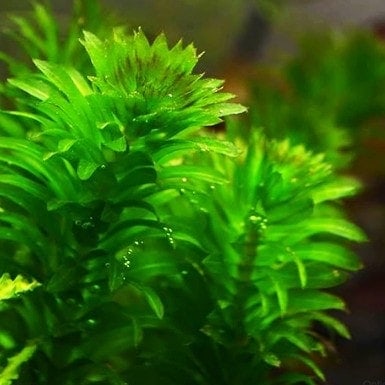
| Care Level: | Easy |
| Light: | Low to high |
| Substrate: | Not required |
Elodea (also known as Anacharis) is one of the fastest growing water plants in the aquarium hobby. It is not a picky plant and can do well in almost any setup with a wide range of water conditions and lighting. Fancy goldfish generally leave this plant alone, but even if the goldfish nibble at it, it grows so fast that it’s hard for them to ever annihilate. With enough light, it produces fine streams of bubbles that oxygenate the water. Offers shelter for eggs and fry and ensures cleaner water for fish. The biggest issue I’ve had with it is what to do with all the extra plants.
How to Plant:
Throw it in the water as-is or plant the stems in the substrate if desired. Elodea will throw out roots regardless if it has a substrate or not. Propagate by pinching the stems to create new plants.
- Grows incredibly fast
- Highly water oxygenating
- Flexible plant that does well with any substrate (or none at all)
Why Choose Live Plants over Fake Ones for Your Goldfish?
There’s no doubt about it: There’s just nothing quite like the natural beauty of a planted goldfish tank.
Plastic plants have their perks. They are usually inexpensive… and very difficult to kill. They can pose the dangers of pokey edges to clumsy goldfish. And the silk ones always seem to fall apart or fade after a bit. Not to mention they never seem to have a “real” look, and they don’t offer anything to the aquarium environment biologically speaking.
Live plants, on the other hand…why wouldn’t you want them? They absorb nitrates to use as fertilizer. In a closed aquarium, this is very beneficial for your water quality. They also help produce oxygen (O2) while absorbing carbon dioxide (CO2). This is more important the smaller your fish’s home is. And of course, they are gorgeous!
Which Plants will Goldfish Avoid?
I’ve tried a lot of different ones in my search for the perfect goldfish plant. And I’m happy to say I’ve found the answer. It needs to be tough. See, it isn’t easy finding live plants that stand a chance with the “monster munchers” in your tank.
Goldfish need vegetable matter as part of their diet, but I think you’d rather give them a piece of lettuce as a more economical snack! And unless you have a much larger ratio of plants and water to fish, nothing edible stands a chance – not even the faster-growing ones.
I learned the hard way that, while duckweed might look nice initially, they’ll only end up passing through your goldfish’s tummy.
So whatever plant you choose, you will want to make sure your goldfish won’t eat it. Something else to consider is whether or not the plant requires some kind of liquid fertilizer being dosed into the water. The good news is goldfish are such heavy waste producers that some plants such as Anubias and Java Fern may not require supplementation in that respect.
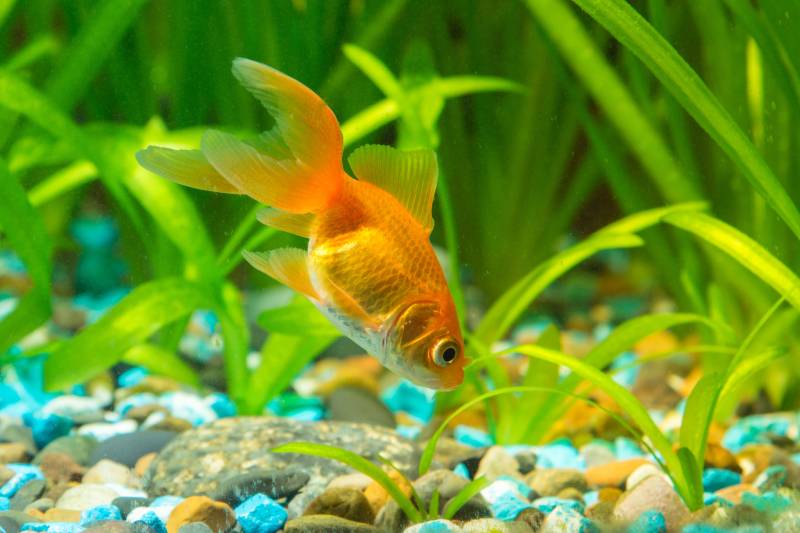
Is There a Way to Prevent Goldfish from Destroying Your Aquarium Plants?
While most goldfish will not eat the ones recommended in this article, there is an element of subjectivity with each individual fish keeper’s experience. Some fish are just more destructive than others and will shred anything edible, no matter what (though, fortunately, these kind of goldfish are few and far between!) Fancy goldfish seem to be less prone to destroying them than athletic breeds like Commons or Comets.
The truth is, in my experience, most goldfish destroy plants because they don’t have anything else better to do. They’re bored. But don’t lose hope: One way to deter goldfish from chowing down on your beauties is to DISTRACT THEM. Give them softer foraging materials like wilted spinach, cucumber, cilantro, or other leafy veggies, and they will be much more likely to ignore your other plants.
These are way more appetizing and satisfy their desires to tear into something! Growing in your plants for a month or so is also a good idea before adding fish.
Where and When Should You Buy Aquarium Plants?
Buying your goldfish’s plants online (which is what I do) has some nice advantages; you can get access to far more selection than what’s at your local pet store. That said: Some plants don’t ship as well as others.
More sensitive species such as Vallisneria can show up at your door brown and wilted if shipped in excessive cold or hot temperatures. (Speaking from experience here.) Checking the weather to make sure it won’t be under 30 or over 100 degrees F for a few days after you plan to order is a good idea.
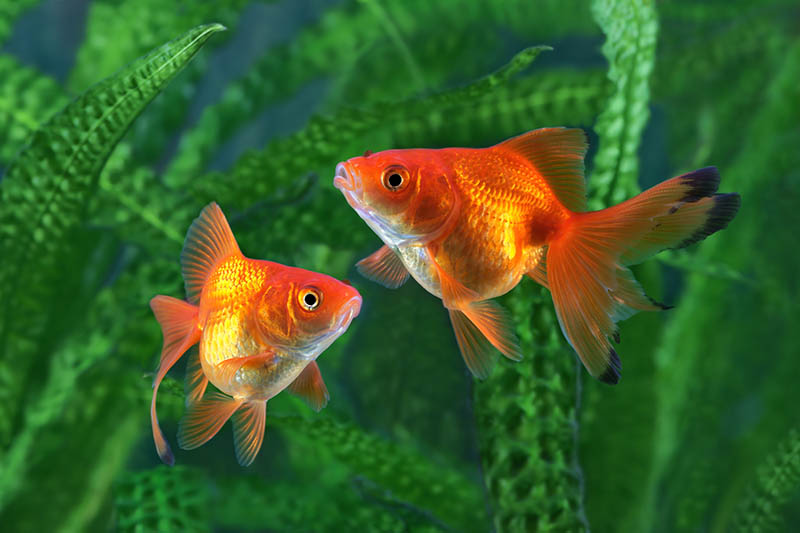
Quarantining Your New Plants
Check with the seller and see what they do to ensure your plants don’t come with unwanted “hitchhikers.” Snails are usually the biggest issue, but in rarer cases, pathogens could be transmitted (depending on where your plant is from and how it was housed).
For a seller that does no quarantine or grows their plants in a tank with other fish, you will need to make sure your plants are disease and pest-free yourself.
You can do this by keeping the plant isolated for a minimum of 28 days. Some people have success doing a hydrogen peroxide and water dip (though this may be hard on certain species). Either way, healthy plants will help make for a healthy aquarium.
How to Attach Your Goldfish Plants
Because some varieties (such as Anubias or Java Fern) do not require a substrate, you will need to attach it to something in the tank to secure it.
Some people use nylon string. I did that for a long time, and let me tell you, it was a total pain. No matter how strong you tie it, it always gets loose due to disturbance during water changes. Loose thread is hazardous to goldfish, who can get caught on it by their gills or fin rays (this actually happened to my goldfish on several occasions).
Some recommend superglue, but the problem is that it usually has other things in it that can potentially leach into the water. But then I found plant glue. Let me tell you, this stuff has been a lifesaver.
You can attach your Anubias or Java Fern or Java Moss or whatever to wood or rocks in seconds, and it is goldfish safe, too (unlike Superglue).
I use this kind by the makers of Seachem Prime. Lately, I’ve been having success using these lead plant weights for my Anubias and Java fern. It’s less messy and seems to last much longer than the glue.
Now just watch them grow.

What About You?
Do you keep live plants in your goldfish tank, or are you still nervous about trying them out? What has your experience been with a planted goldfish tank?
Let me know your experiences in the comments section below.
Some plants can survive if they grow fast enough to avoid being eaten. This usually depends on a low ratio of fish to plants. However, this method usually ends up just slowing the INEVITABLE DEATH of these plants.
See also:
- Pygmy Chain Sword: How to Plant & Grow (Complete Care Guide)
- 13 Great Aquarium Stem Plants – Reviews & Top Picks
Featured Image Credit: Photobank gallery, Shutterstock




